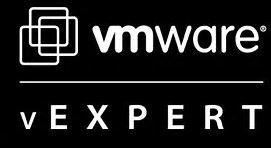This week I’m attending Mobile World Congress in Barcelona. This is one of the biggest tech conferences in the world – this year they are expecting 100,000 attendees and over 2,400 vendors! This isn’t one of the conferences in the normal circuit for IT pros and vAdmins, when you hear about Mobile World Congress you usually think of the big networking vendors and telecom providers. Trust me, they are here in force! But why is someone like me with years of experience on the traditional data center side of the house attending?
Edge and IoT are changing traditional data center
Data center ops aren’t what they were 15 years ago when I was a sysadmin, heck things are dramatically different than what they were 5 years ago. One of the things that has changed is the ability to take compute to where the data is, making Edge computing more accessible. If you combine that new capability with enormous amounts of data being created on the Edge by IoT devices, you start to understand that the Edge is more than what we’ve done with ROBO sites over the years. This is the reason I’m at Mobile World Congress, speaking with attendees in the Dell Technologies and Lenovo booths about VMware Project Dimension, which is a VMware managed cloud service for the Edge.
5G is here – and you should care
Every inch of space in the Barcelona Fira is packed with booths for Mobile World Congress, even the space where we have our sessions for VMworld. In that section, I saw signs for 5G access points. A host of companies will make 5G announcements at the show. This all sounds very exciting, but why should datacenter professionals care about 5G?
5G is the next generation of mobile networking. Right now the fastest mobile network available is 4G LTE, prior to 4G LTE there was 3G. According to the website EME explained, 3G network response time was ~100 milliseconds, 4G LTE is ~30 milliseconds, and 5G will be about 1 millisecond! That is almost instantaneous response time, and it will change the game for making IoT devices truly usable. This is what will power smart cities and farms, and lots of other apps that haven’t even been imagined yet.
It is sure to change how datacenters are architected and managed. 5G is being prepared for a 2020 commercial launch, and should be widespread by 2025. The EMF explained site has a pretty detailed technical explanation, if you’re into networking you owe it to yourself to check it out.
AI architectures are enabled by advances in Edge and 5G
If we can take compute to locations where IoT devices are creating enormous amounts of data, and we have a mobile network capable of almost instant responses, we have all the elements necessary to create real AI architectures. But now that we can create artificial intelligence, we need to start worrying about the impacts that will have on society. There are several keynotes at Mobile World Congress on democratizing AI, fighting confirmation bias, and ethics in AI in addition to how to build these new architectures.
This indicates to me that AI is preparing to become more mainstream, and as data center professionals we need to embrace this.
Mobile World Congress is Highlighting the Change that is upon us
I’ve been blogging about the big changes coming to the data center for the last several years, and the change is finally starting to materialize. Datacenter architectures are on the threshold of a huge change, and to keep ahead of the curve traditional datacenter admins need to take advantage of the learning opportunities in unfamiliar conferences such as Mobile World Congress.













